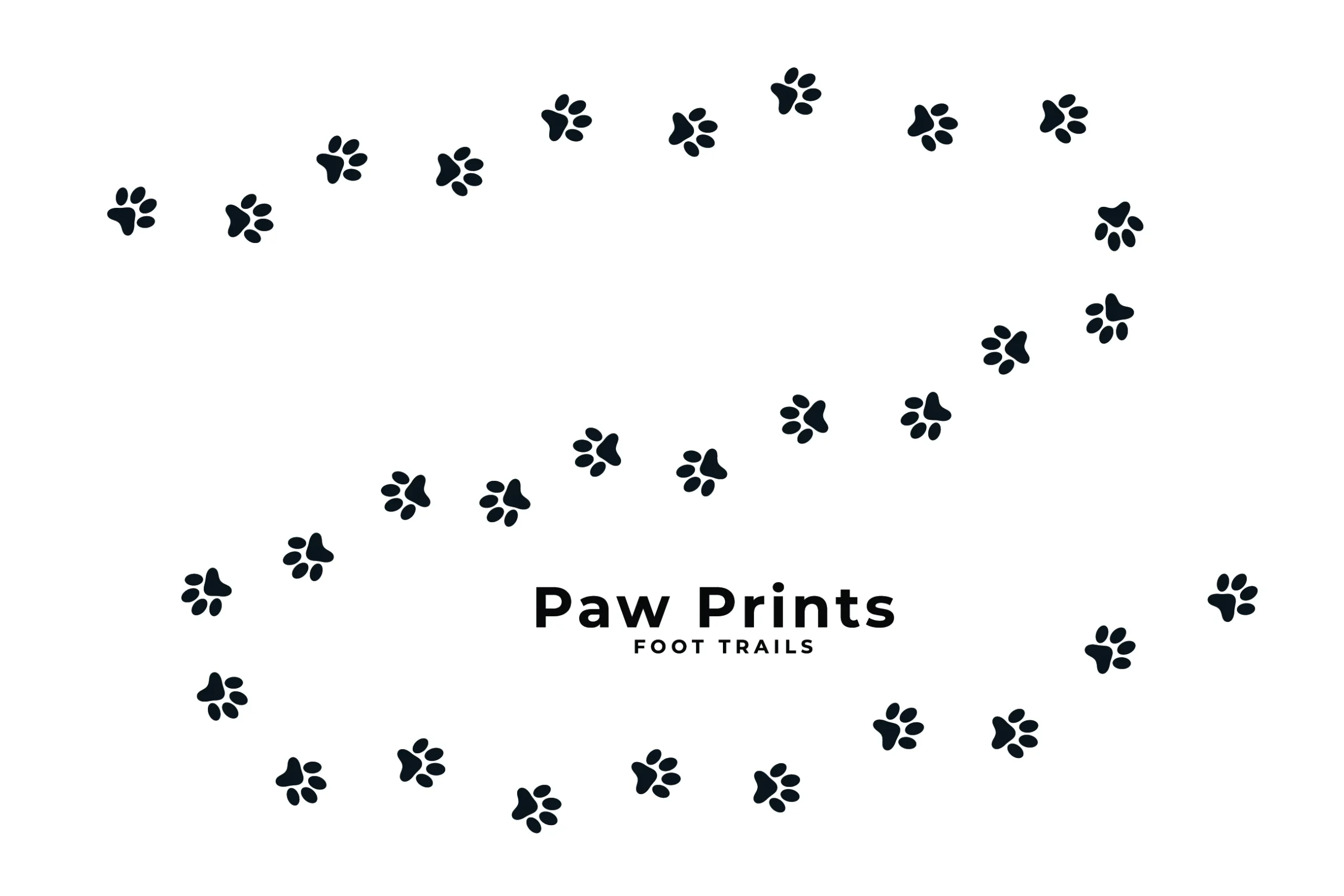Introduction — What Are Canine Paw Prints?
Canine paw prints are more than just marks left behind by dogs. They tell a story — about movement, personality, and even emotion. Every dog leaves a unique impression on the ground, whether it’s in mud, sand, or snow. In this article, you’ll learn everything about canine paw prints: their structure, how to identify them, what they reveal about your dog, and how to make beautiful keepsake impressions at home.
Dogs have walked beside humans for thousands of years, and their paw prints are physical reminders of that bond. Let’s explore the fascinating details behind these little footprints that say so much.
Understanding the Anatomy Behind Canine Paw Prints
To truly understand canine paw prints, you need to know what creates them. A dog’s paw is an incredible structure built for protection, balance, and movement. Each paw includes:
- Digital pads: Four smaller pads under the toes that cushion every step.
- Metacarpal (front) or metatarsal (back) pad: The large central pad that forms the main shape of the print.
- Claws: Visible at the tip of each toe because dogs can’t retract them.
- Dewclaw: A small extra “thumb” that usually doesn’t touch the ground.
- Carpal pad: Found higher up on the front leg, used mainly for traction when running or going downhill.
Front paws are usually larger and rounder because they support more body weight. Rear paws are smaller and narrower, helping with forward motion. These differences appear clearly in paw prints, helping trackers tell front from back paws.
The combination of these pads and claws gives every print its distinctive look — the heart-shaped or triangular center pad surrounded by four toe impressions and small claw marks.
Key Features That Define a Dog’s Paw Print
Every canine paw print has a pattern you can recognize. Here’s what to look for:
- Toe Count: Four toes in a semi-circle.
- Central Pad Shape: Typically heart or triangular in shape, with a single indentation at the top.
- Claw Marks: Always visible — unlike cats, dogs can’t retract their claws.
- Symmetry: The two middle toes usually sit slightly ahead of the outer ones.
- Stride Pattern: Dogs often walk with the back paw landing close to or inside the front paw’s print.
Because of these traits, dog prints are easy to tell apart from most wild animals. The key is noticing how the toes and claws align and how the print spreads depending on movement and surface.
If a print looks wide and splayed, the dog might have been running or walking on soft ground. Tight, compact prints often come from slower, careful steps on firm surfaces.
Canine Paw Prints vs. Wild Canine Tracks
This is one of the most searched topics related to canine paw prints. Many people want to know how to tell the difference between dog tracks and those of wild canines like coyotes, wolves, or foxes.
Here’s how to tell them apart:
| Feature | Domestic Dog | Coyote/Wolf | Fox |
| Shape | Often rounder and wider | Oval, narrow, compact | Small, narrow |
| Claw Marks | Blunter and spread out | Sharp, straight | Tiny and close together |
| Stride Line | Wanders or zigzags | Straight, purposeful | Straight |
| Symmetry | Uneven (due to playful gait) | Symmetrical | Symmetrical |
| Size | Varies by breed | 2.5–5 inches | 1.5–2 inches |
Wild canines conserve energy, so their tracks appear in nearly perfect lines. Domestic dogs wander and change direction frequently, creating irregular patterns. If you see splayed toes and inconsistent spacing, it’s most likely a domestic dog.
What Can a Paw Print Tell You About a Dog?
A paw print is like a clue. It can reveal surprising details about the dog that made it:
- Size: Larger prints suggest bigger breeds like Labradors or German Shepherds. Smaller, oval prints might belong to terriers or toy breeds.
- Weight Distribution: Deep front prints mean the dog was moving forward with energy or carrying weight on the front legs.
- Behavior: Scattered prints can indicate excitement or playfulness. Straight, evenly spaced prints show calm walking.
- Surface Effect: Mud and snow exaggerate size; dry sand or dirt gives more accurate shapes.
While canine paw prints can’t identify a breed precisely, they can help estimate the dog’s size, gait, and mood.
How to Make a Canine Paw Print at Home (Safe and Easy)
Making your own canine paw prints is fun, simple, and memorable. Here’s how to do it safely:
Materials You’ll Need
- Non-toxic ink pad or washable paint
- Clean sheet of paper or cardstock
- Damp cloth for cleanup
- Optional: pet-safe clay or plaster kit
Steps (Ink or Paint Method)
- Clean your dog’s paw with a damp cloth.
- Gently press the paw onto the ink pad or paint.
- Lightly place it on paper — don’t press too hard.
- Lift slowly to reveal a clean print.
- Wash the paw immediately.
Clay or Plaster Impression
- Roll pet-safe clay into a smooth disc.
- Press your dog’s paw gently but firmly into it.
- Let it dry or bake according to kit instructions.
- Paint or seal it for a lasting keepsake.
These impressions make beautiful mementos or gifts. Some pet owners even use digital scanning to turn their dog’s paw print into a vector image for printing or tattoos.
The Science and Uniqueness of Canine Paw Prints
You might wonder — are canine paw prints unique like human fingerprints?
The answer is: partly yes. While dogs don’t have detailed ridges like fingerprints, each paw pad has slightly different textures and patterns due to genetics, wear, and lifestyle.
Researchers and forensic experts can sometimes use paw prints to match a specific dog, but it’s not common practice. Environmental factors like mud or snow distort details, making forensic identification difficult.
Still, every dog’s paw has a distinct size, proportion, and claw spacing — enough for owners to recognize their own pet’s prints among others.
Caring for Your Dog’s Paws
Healthy paws create clear, beautiful prints. Regular paw care keeps your dog comfortable and safe.
Here’s a quick routine:
- Clean regularly: After walks, remove dirt and debris.
- Trim nails: Long claws can cause pain and distorted prints.
- Moisturize pads: Use dog-safe balm to prevent cracks.
- Check for injuries: Cuts or dryness can change how prints appear.
If your dog walks on hot pavement or ice, use protective booties or paw wax. Healthy paws not only help your dog move comfortably but also ensure perfect paw impressions.
Frequently Asked Questions (FAQs)
- Are all canine paw prints the same?
No, each dog’s paw print has small differences in size, spacing, and pad texture. - Can I tell a dog’s breed from its paw print?
Not exactly. Paw prints can indicate general size or breed type but not an exact breed. - How can I tell front and back paw prints apart?
Front prints are wider and rounder; back prints are smaller and more oval. - Can I use paint for a dog paw print?
Yes, but only pet-safe, non-toxic paint. Wash the paw immediately afterward. - What’s the difference between dog and coyote paw prints?
Dog prints are rounder and splayed, while coyote prints are narrow and form a straight trail.
Conclusion — Why Canine Paw Prints Matter
Canine paw prints are more than shapes in the dirt — they’re signs of movement, emotion, and companionship. From identifying tracks on a trail to creating keepsakes at home, understanding paw prints helps us connect with dogs in a deeper way.
Each print tells part of a story — a joyful run, a curious sniff, or a peaceful walk beside you. The next time you see canine paw prints on your path, take a closer look. You might just learn something new about the loyal companion who left them behind.


